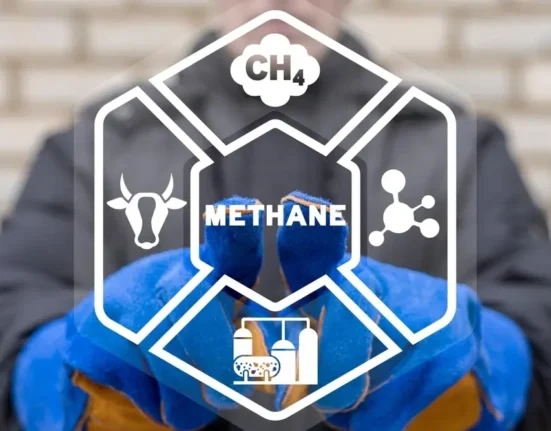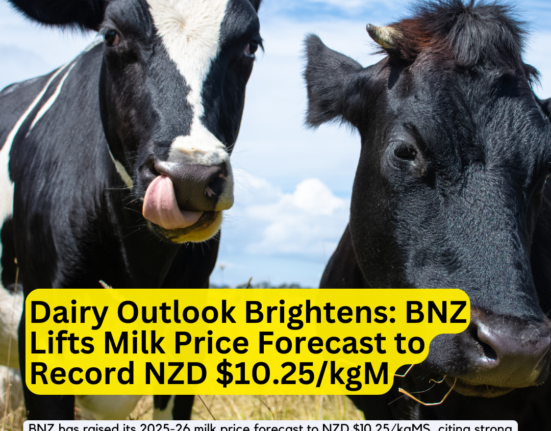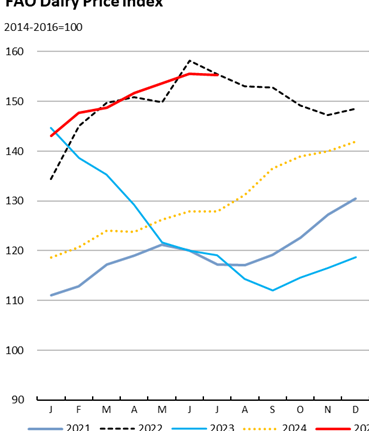Published by Dairy Dimension | March 30, 2025
By Christopher Doering, with additional insights by the Dairy Dimension Editorial Team
In a move that reflects both ambition and long-term vision, American dairy and nutrition leader Chobani has announced a record-breaking $500 million expansion of its flagship plant in Twin Falls, Idaho. This is not just the largest capital investment in ChobaniŌĆÖs historyŌĆöitŌĆÖs a powerful message about the future of dairy, innovation, and strategic resilience in the global food industry.
¤ōł The Scale of the Investment
This expansion will increase the facilityŌĆÖs production capacity by 50%, adding 500,000 square feet to what is already the largest natural food manufacturing plant in the U.S. Once completed, the Twin Falls plant will cover 1.6 million square feet and operate 24 production lines focused on high-demand segments like Greek yogurt, oat milk, and dairy creamers.
ŌĆ£This expansion is about building for the futureŌĆönot just for Chobani, but for consumers and communities who believe in better food.ŌĆØ
ŌĆö Chobani Spokesperson
Chobani expects the expansion to create at least 160 new full-time jobs, adding to its existing 1,200-person workforce in Twin Falls. Operations are expected to begin in early 2026, with construction commencing immediately.
¤ÅŚ’ĖÅ Public-Private Partnership at Work
A key factor in ChobaniŌĆÖs ability to scale so significantly lies in its collaborative approach with local government. The company is working closely with the City of Twin Falls and the Urban Renewal Agency (URA) to upgrade key infrastructure.
Highlights of the partnership include:
- ¤Æ¦ Water System Expansion: A new municipal well (South Well #5), adding 1 million gallons/day in capacity, funded entirely by the city.
- ¤¦» Wastewater Upgrade: A $9 million gravity main, cost-shared between Chobani and the city.
This synergy between private ambition and public infrastructure sets a valuable precedent for industrial planning, especially in sectors like dairy where input-output ratios depend heavily on logistics, water, and waste management.
¤¦¼ A Legacy of Bold Investments in Innovation
Chobani is no stranger to bold moves. Since opening the Twin Falls plant in 2012, it has treated the facility not just as a production unit, but as an innovation epicenter. Key milestones include:
- 2016: $100 million expansion to increase core yogurt capacity
- 2017: Launch of a 70,000 sq. ft. R&D and innovation hub on-site
Now, with its biggest investment yet, Chobani is betting on product diversification and the ability to meet spiking global demand for high-protein, clean-label, and dairy-alternative products.
¤¦ā Beyond Yogurt: The Future of Dairy is Diverse
While Chobani remains synonymous with Greek yogurt, its portfolio is evolving rapidly:
- Oat milk and plant-based creamers targeting lactose-intolerant and vegan consumers
- Chobani Creations, a dessert-inspired high-protein yogurt line launched in 2023
- New high-protein dairy SKUs released in 2024, aligning with global wellness trends
By moving nimbly across consumer segments while retaining brand integrity, Chobani shows how legacy categories like yogurt can thrive with the right innovation strategy.
¤Æ░ Financial Discipline Meets Strategic Bravery
Behind this bold expansion lies a company with a firm grasp on its numbers:
- $1.4 billion in revenue (2021) and strong year-on-year growth
- $10 billion valuation (2021 IPO planning)
- $750 million private investment from TPG Capital (2014)ŌĆöfully repaid by 2018
- $650 million bond issue (2024) used to buy out preferred equity from the Healthcare of Ontario Pension Plan
ChobaniŌĆÖs financial moves reveal a sophisticated balancing actŌĆöfueling growth without compromising ownership or mission.
ŌĆ£TheyŌĆÖve shown that mission-driven doesnŌĆÖt mean profit-averse. Chobani is running a values-based business, but theyŌĆÖre doing it with Wall Street-level discipline,ŌĆØ
ŌĆö Food finance analyst, New York
¤ć«¤ć│ A Lesson for Indian Dairy: Think Bigger, Broader, Bolder
As India becomes one of the largest and fastest-growing yogurt markets globally, ChobaniŌĆÖs strategy offers vital lessons for Indian dairy brands.
Despite India’s deep-rooted dairy culture, most yogurt production remains fragmented and under-leveraged in value-added formats. The Chobani modelŌĆöfocused on brand-led innovation, global formats, smart factory investments, and alternate dairyŌĆöis something Indian processors can learn from.
ŌĆ£Chobani doesnŌĆÖt just make yogurt. They make relevance. Indian dairies should be leading the high-protein, gut-health, and alt-dairy narrativeŌĆönot waiting for MNCs to do it first.ŌĆØ
ŌĆö Dairy Dimension Editorial
In particular, IndiaŌĆÖs cooperative and private dairy sector must begin investing in premiumization, R&D infrastructure, and marketing muscleŌĆöareas where global peers like Chobani are setting the benchmark.
¤īŹ Part of a Bigger Movement in Food Manufacturing
ChobaniŌĆÖs investment joins a global wave of food giants upgrading production capacity for the next decade. Recent announcements by Nestl├®, PepsiCo, J.M. Smucker, and Ingredion show a shared focus on scale, automation, and consumer-centric innovation.
ŌĆ£TomorrowŌĆÖs winners in dairy wonŌĆÖt just be those who produceŌĆöitŌĆÖll be those who adapt and inspire,ŌĆØ
ŌĆö Dairy industry consultant, Chicago
¤¦Ł Conclusion: Building for the Future of Food
In choosing to double down on Twin Falls, Chobani is signaling that the future of food belongs to the bold, the ethical, and the efficient. This isnŌĆÖt just about yogurtŌĆöitŌĆÖs about a new model of growth, grounded in community, powered by innovation, and scalable to global ambition.
As India rethinks its own dairy future, Chobani offers a working blueprintŌĆöone that Dairy Dimension believes deserves close attention.







